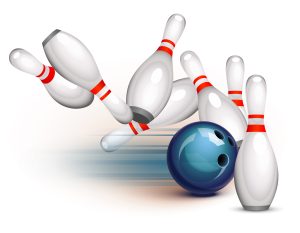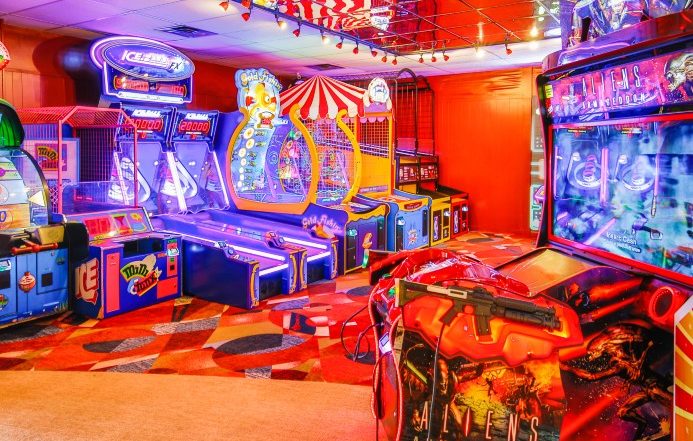ELEVATE YOUR BOWLING ENTERTAINMENT CENTER’S SUCCESS WITH PINNACLE CONSULTING
Transform your bowling business into a thriving entertainment center with Pinnacle Entertainment Group. With over 100 years of combined experience in bowling entertainment center consulting, Pinnacle is your partner for success.
Adding Family Entertainment Center (FEC) components like arcades, laser tag, and escape rooms can boost revenue and margins, but operational know-how is crucial. Whether you’re building from the ground up, modernizing, or enhancing an existing center, we offer expertise to optimize BEC operations.


EXPERT BOWLING FEC CONSULTING, PLANNING & DEVELOPMENT
Benefit from our extensive experience in planning, developing, and operating Family Entertainment Centers (FECs). We understand the evolving dynamics of the entertainment industry and leverage this knowledge to guide you through the intricacies of creating a Bowling Family Entertainment Center.
Conducting a
Feasibility Study
Begin by acquiring a feasibility study for your bowling center project. Ensure the study is tailored to your project specifically, avoiding generic, cookie-cutter models. Adopt a somewhat conservative approach in forecasting to enhance the chances of exceeding projections.
Identify
Best-In-Class Vendors
Once the feasibility study confirms project viability, focus on identifying top-tier vendors. Seek excellent architects, construction professionals, bowling product suppliers, arcade distributors, and reputable companies for attractions like Laser Tag or Mini-golf. Carefully choose vendors as they will be integral to the success of your project and long-term partners.
Financial
Plan
With the feasibility study, vendors, and pricing in place, focus on securing financing. Combine investment capital and bank financing for a comprehensive financial plan. Commence construction and prepare for the exciting journey of building and opening your bowling entertainment center to the public.
DIVERSIFY YOUR SUCCESS
BEYOND TRADITIONAL REVENUE
Maximize your center’s potential with innovative approaches. Over the last decade, the bowling business has evolved, with centers integrating diverse attractions like arcades, laser tag, mini-golf, go-karts, escape rooms, axe throwing, and more. Our experience in operating various attractions ensures expert guidance in selecting and optimizing the right mix for your facility. These attractions, suitable for indoor or outdoor spaces, contribute significantly to revenue diversification.
Groups and Events
FEC attractions not only boost revenue but also generate group and party business, accounting for 25-35% of gross revenues. Opportunities extend beyond birthdays to lucrative corporate events such as holiday parties, team off-sites, happy hours, and team meetings, often occurring during weekdays, making them more valuable than weekend business. Get Started.
Bowling Experience
Enhance the modern bowling experience with critical upfront decisions. Choose between string pinsetters and “free fall” pinsetters, considering the precision and maintenance aspects. Opt for boutique bowling spaces with reserved lanes, dedicated bars, enhanced lighting, and the immersive Spark Bowling experience for interactive games. Get Started.
Food and Beverage
Upgrade from the traditional snack bar to restaurant-quality options. The menu, though not extravagant, should meet high-quality standards, making customers happy to dine in your facility. Cater to corporate events with a kitchen capable of handling groups of 100+ operationally. Tailor your menu to your target demographic. Get Started.
FEC Attractions
The arcade stands as the most profitable attraction, essential for success. With nearly a century of experience, our expertise ensures revenue generation beyond industry standards. Depending on available space, competition, and target demographics, consider additions like laser tag, miniature golf, virtual reality, go-karts, and bumper cars. Outdoor options include go-karts, miniature golf, ropes courses, pickleball, and volleyball. Get Started.
EMPOWERING YOUR TEAM FOR LONG-TERM SUCCESS
Pinnacle Entertainment Group has helped hundreds of bowling centers design, open, and operate successful concepts. We don’t sell you products or provide cookie cutter solutions. Each project is different, our business model is we join your team and leverage our experience, partnerships, and team to save you time, money, and generate profits in excess of industry standards.
In choosing Pinnacle Entertainment Group, you’re not just gaining a consultant—you’re gaining a dedicated partner committed to elevating your bowling center’s operation, profitability, and overall success. Let’s collaboratively redefine the future of your center, setting new standards in the dynamic world of bowling entertainment.


